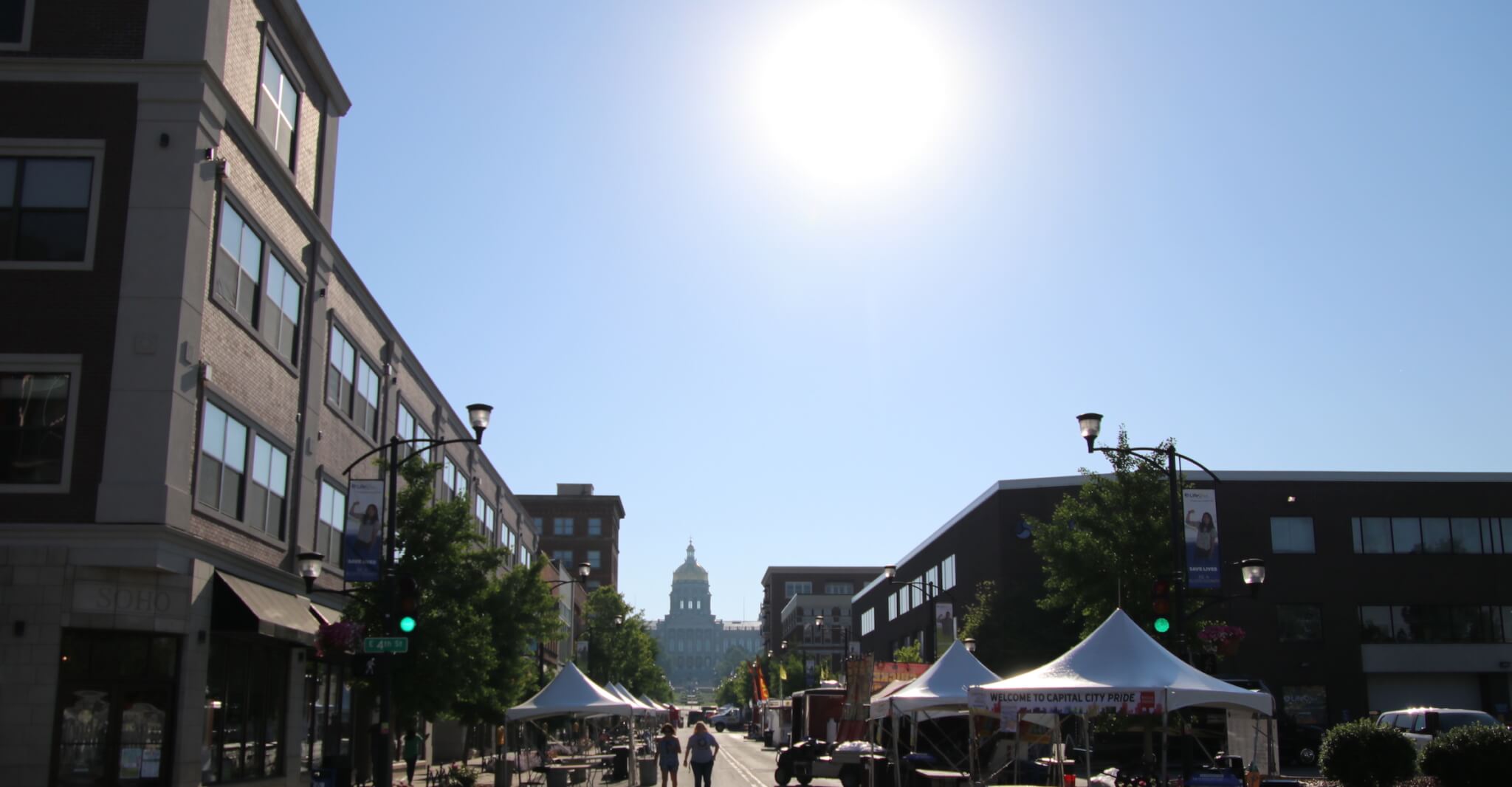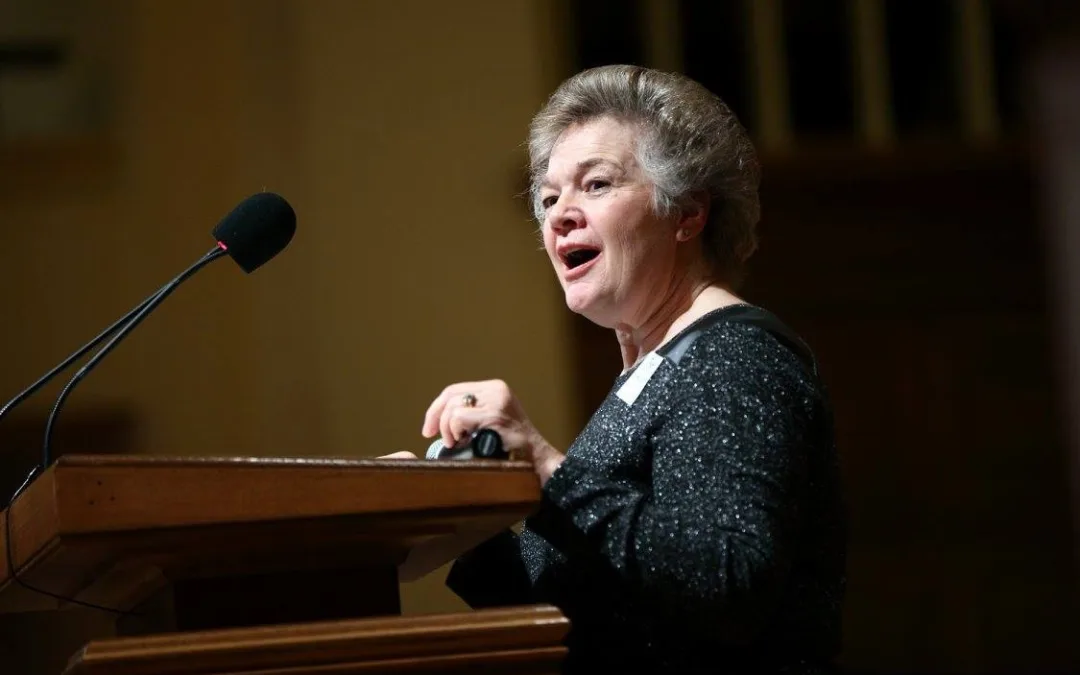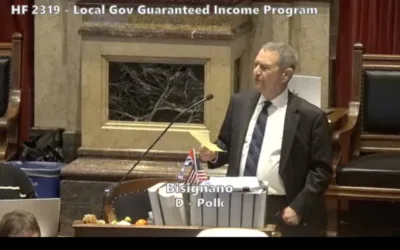
Iowans felt near record-breaking heat this summer, raising concerns the high temperatures may be lethal as well as uncomfortable.
Reports indicate premature deaths in the Midwest will increase more than other parts of the country due to extreme summertime temperatures.
“The premature deaths can be mitigated to some degree, but of course that requires air conditioning, it requires monetary investment and of course, energy,” said James Boulter, a chemistry professor at the University of Wisconsin-Eau Claire. “Those who are better off are much more likely to have an indoor job and can afford the air conditioning, while those in lower socioeconomic strata have a harder time coping with the extreme high temperatures.”
The common heat-related deaths often heard in the news in Iowa typically relate to the death of children left in hot cars during heatwaves.
The Midwest is expected to have the nation’s largest increase in extreme temperature-related premature deaths, according to the Fourth National Climate Assessment, a book published in collaboration with 13 U.S. scientific agencies.
An Iowa Policy Project report, published earlier this month, is consistent with that prediction.
In Iowa, average temperatures overall have risen 0.4 degrees per decade over the past four decades, adding up to a nearly 5% increase, according to “An Uncertain Future for Iowa: The Outlook for Iowa Communities and Flooding as our Climate Changes.”
[inline-ad id=”0″]
“Along with higher average temperatures, climate projections indicate that the hottest summer days will become even hotter,” said Boulter, the report’s author, causing an uptick in premature deaths.
Later this month, Jerry Schnoor, a University of Iowa professor of civil and environmental engineering, along with faculty members and professors from 38 state public and private colleges and universities, will release their annual Iowa Climate statement.
This year’s statement is focused on the severity of the state’s heatwaves.
“[It’s] not easy to get every science teacher that’s teaching at higher education level to agree on a statement,” Schnoor said. “We have over 200 higher education teachers this year who have signed the statement on heatwaves.”
The Heat Will Hit Urban, Rural Areas
Cities hold heat at a higher rate than open land, said Boulter, so their absorption of solar energy contributes to extreme heat.
This heat, along with high population density numbers, leads to a greater number of premature deaths.
“The combination of those effects do lead to additional deaths,” Boulter said.
Malls, libraries and other public spaces across the state volunteered as cooling centers during the summer’s bouts of extreme heat.
Other places in the upper Midwest are also providing public services to curb heat-related illness or death. Chicago opened its transit system for those who wanted to avoid the heat this summer.
But public services aren’t always utilized. Those who work outdoors typically can’t find relief, Boulter said.
“[Using public services is] generally not as possible in a rural area or if you’re working outside,” he said. “You can’t access air conditioning necessarily unless your tractor is air-conditioned. But if you’re working outside there is much less availability for [air conditioning].”
There is a greater emphasis on those in rural communities to be outside in order to do their job, which becomes problematic on extreme heat days, said David Osterberg, lead researcher at the Iowa Policy Project and professor emeritus at the University of Iowa.
“People can’t get out and work because the temperature is too high,” said Osterberg. “In Iowa, the cost of raising livestock increases because of the heat as well.”
Candidates On Environmental Justice
Access to public services and air conditioning raise questions of environmental justice, Boulter said. Those who are better off can afford the cost of cooling off.
Unabated climate change will translate into costs among the workforce and in utility bills, potentially exacerbating existing health disparities among those most at risk, according to the National Climate Assessment.
By 2050, increased temperatures are estimated to cost around $10 billion [in 2015 dollars] due to premature deaths and lost work hours. Increased electricity demand is estimated to amount to $1.2 billion by 2090 [in 2015 dollars].
Presidential candidates like New Jersey Sen. Cory Booker, Tom Steyer and former Housing and Urban Development secretary Julián Castro have addressed climate strategies in the context of social justice or civil rights.
“We can’t move forward into a clean energy economy without righting the wrongs of decades of pollution and corporate greed in marginalized communities, and without an informed commitment to not repeating these wrongs,” Booker’s proposal states.
Steyer’s climate change strategy centers on justice for marginalized communities and at-risk areas around the world.
Castro said he will frame climate change through the lens of environmental justice by using the Environmental Protection Agency to entice states to embrace his focus on environmental justice by blocking states that lack environmental justice policies from receiving EPA funds.
By Isabella Murray
Photo by Julie Fleming
Posted 9/17/19

Iowa Republicans make outlawing gay marriage key 2024 campaign priority
Iowa Republicans have made outlawing gay marriage a key goal in their 2024 party platform. During the Iowa GOP’s 2024 state convention on Saturday,...

Department of Justice says Iowa immigration law violates US Constitution
If Iowa doesn’t suspend the enforcement of its new immigration law by May 7, the state could face a federal lawsuit, according to the Des Moines...

Rushing: Iowa State president said the quiet part out loud
I want to thank Iowa State University President Wendy Wintersteen for doing us all a favor by finally saying the quiet part out loud: all the...

Iowa sets aside almost $180 million for year two of voucher program
Iowa has committed nearly $180 million in taxpayer funds to support private school tuition in the 2024-25 school year, which is almost $50 million...

Kalbach: Immediate action needed on corporate ag pollution
Iowa agriculture has undergone substantial changes over the past 40 years. We see it all around us. Rather than crops and livestock being raised on...

VIDEO: Jochum calls Gov. Reynolds’ summer meal program a ‘hunger game’
Iowa Gov. Reynolds announced a competitive $900,000 grant program to feed Iowa children over the summer, months after she declined $29 million in...




